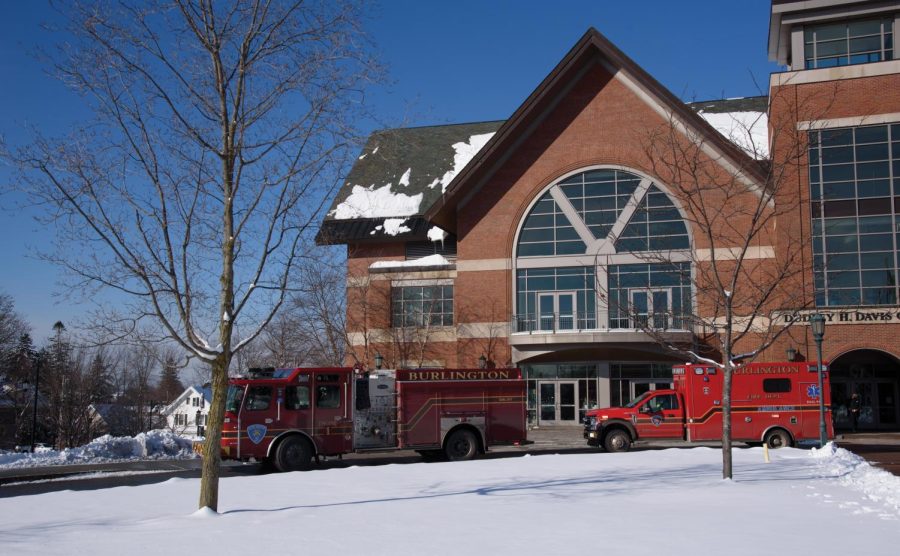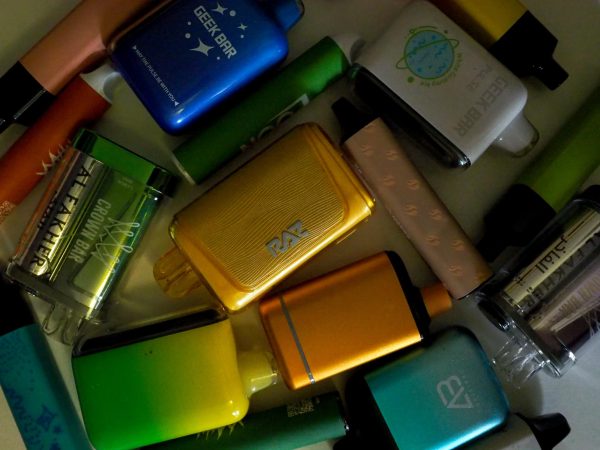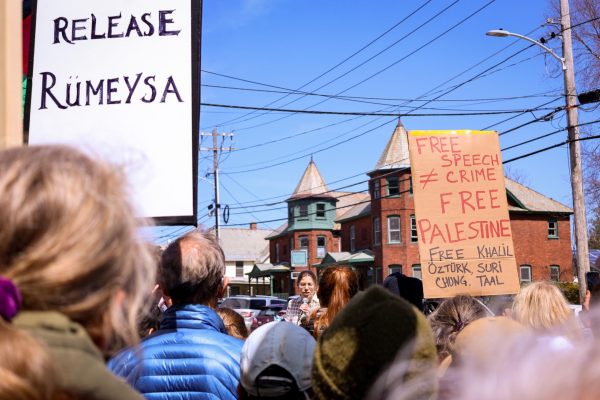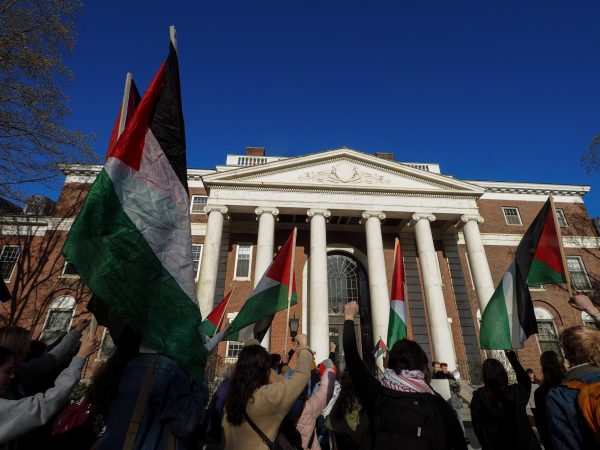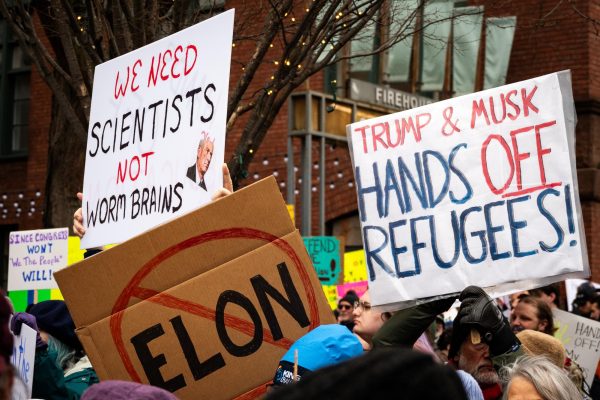More fire trucks on campus in 2022 indicates return to pre-COVID numbers, chief says
A fire truck and ambulance outside the Davis Center Jan. 27. The Burlington Fire Department and UVM Rescue will respond to any medical calls on campus.
Fire alarm activations at UVM increased by roughly 18% in 2022 compared to 2021, according to University Fire Marshall Barry Simays.
Even with the uptick in fire alarm activations at UVM from 2020 to 2022, total call responses from the Burlington Fire Department to the University have not significantly increased compared to previous years, said Derek Libby, acting chief of the Burlington Fire Department.
The lower campus population and limited movement of people on campus due to COVID-19 pandemic restrictions in 2020 contributed to the lower number of activations, Simays said.
“Any of these fire alarm entries would generate a response from the fire department,” Simays said. “It’s an actual alarm condition.”
There were 168 alarm activations in 2020, 231 in 2021 and 273 in 2022, Simays said. The increased activations in turn led to more responses from the Burlington Fire Department.
There was a 37.5% increase in alarm activations from 2020 to 2021, and from 2020 to 2022, the total increase was 62.5%, according to Simays.
Out of the 273 activations last year, 104 were due to a malfunction, 52 were unintentionally caused by cooking, 39 were undetermined, and 24 were broadly unintentional—of which 13 were caused by smoking materials, Simays said.
“Four were due to intentional activation,” Simays said. “So whether it’s an individual pulling a manual pull station where there was no emergency, or maybe striking a match and the smoke from that match activates the smoke detector, things like that.”
Other potential causes of alarm activation not relating to fire include shower steam, dust and even construction activities, he said.
Most buildings on campus had five or fewer activations in 2022, Simays said.
McAuley Hall, Central Campus Residence Hall, the Wing/Davis/Wilks Complex and University Heights South each had over 10 alarm activations in 2022, Simays said. Mercy Hall topped the list with 23.
Fire protection systems are inspected regularly by the physical plant department, he said.
“We also have not only internal inspections and tests on a monthly basis for all life safety equipment, but we also have annual required testing and maintenance that a third-party contractor provides,” Simays said.
The Burlington Fire Department had a 16% increase in calls in 2022, which included 1,500 more EMS calls, according to a Jan. 6 NBC5 article.
“I don’t think the University’s having a dramatic impact on our increase in call volume,” Libby said.
The fire department saw an increase of 1,575 calls from the total region they cover during 2022, Libby said.
To use resources more efficiently in the wake of increasing calls, the fire department uses computer-aided dispatching to determine the necessary amount of resources to send based on the incident type and what building it is in, he said.
“We’ve been able to reduce our unit movements, the specific pieces of apparatus, but the call volume stays similar,” Libby said. “We’re sending less fire trucks to an alarm, but we still go to the same rough number of alarms.”
The Burlington Fire Department receives a financial contribution from UVM as part of the agreement between the city and the University, said Michael Schirling, UVM’s chief safety and compliance officer.
UVM Rescue, which responds to EMS calls both on and off campus, makes use of a Burlington Fire Department fire engine housed on Mansfield Avenue in its calls to add extra personnel, such as a paramedic, said Conor McGinn, director of UVM Rescue operations.
Any medical call on campus will see a response from UVM Rescue and the fire department as part of the mutual aid response plan, McGinn said. In the case of a fire on campus, UVM Rescue provides an EMS unit.
Most of UVM Rescue’s responses occur off campus in cities such as South Burlington and Winooski, McGinn said.
In the future, preparedness is key to reducing the number of fire alarm activations at UVM, and following restrictions on hazardous items in residence halls and identifying potential hazards can help to reduce activations, Simays said.


